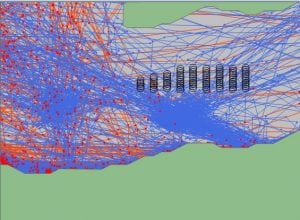Marine
Refining Estimates of Collision Risk for Harbour Seals and Tidal Turbines
November 15, 2016 by Marine Scotland Communications No Comments | Category Collaborations, Marine Directorate general, Marine Directorate Science, Marine Renewables
As the offshore marine renewables industry grows, understanding the way that marine mammals, interact with these are of particular importance. This is especially true of tidal devices, and one particular concern is the risk of collision between marine wildlife and rotating turbine blades below the sea surface. This is a particular issue for harbour seals (Phoca vitulina) in the Pentland and Orkney Waters region where populations of this species are experiencing local declines.
This research commissioned by Marine Scotland and Scottish Natural Heritage and undertaken by ABPmer and SMRU Consulting, presents improved assessments of the risk of collision between harbour seals and tidal turbines using the most up to date information available on how harbour seals use tidally active areas. Building on work undertaken in a previous project, this research has further developed our modelling approach utilising additional information on observed seal behaviour patterns derived from targeted telemetry tracking studies, such as dive depth profiles and transit speeds, and device specific information on the shape of the turbine rotor. It also considers the relationships between tidal current, rotor speed and the risk of a collision being fatal. The updated model produced through this work was applied to two tidal energy projects in the Pentland and Orkney Water region.
As part of its Demonstration Strategy for tidal energy, Marine Scotland is funding further research, which will deploy sophisticated combinations of underwater instruments (active sonar devices, acoustic monitoring, video cameras and seal tagging) to observe the interactions between tidal turbines and a range of animals, including harbour seals and other marine mammals, at an operational tidal array.
Further Information
Tags: renewables, seals, turbines



Leave a comment